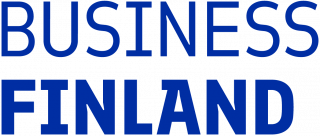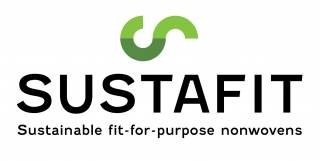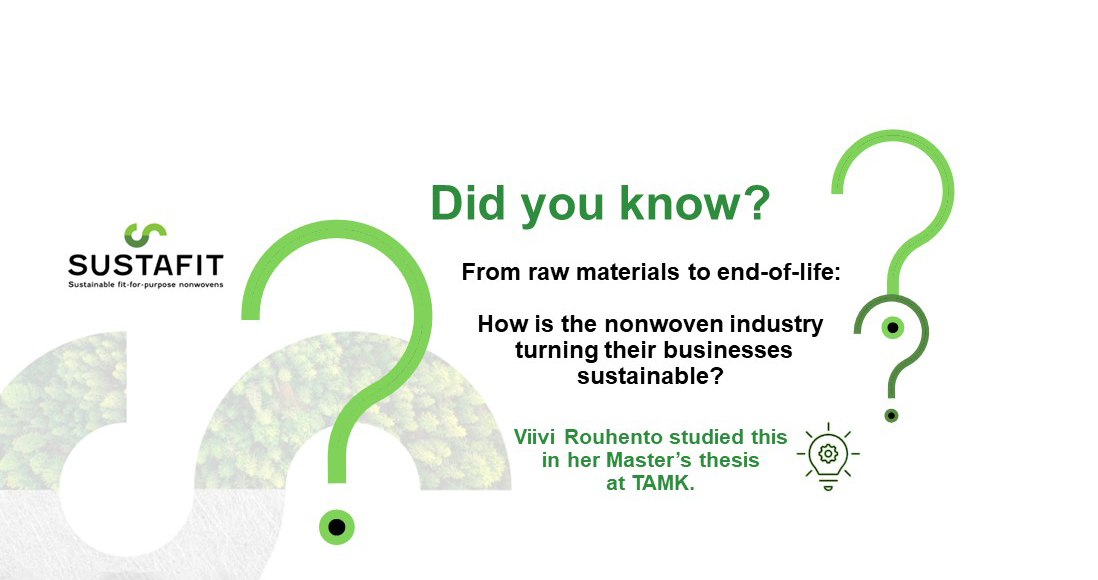Sustainability is a critical issue for businesses of all sizes and sectors due to various factors, including urgent need to address climate change, biodiversity loss, and resource scarcity with growing consumer demands and stricter regulations. Taking sustainability to the core of business can help companies reduce their environmental impact, create cost savings, minimize and mitigate risks, improve their reputation, and access new markets and opportunities.
Green transition is particularly important to the nonwoven industry, since the industry produces mainly single-use, disposable products made from fossil-based materials.
Sustainable business models
The thesis examined how companies in the nonwoven industry, specifically in the wipes and diaper markets, are adopting sustainable business models. The study involved researching the companies’ websites and conducting a few interviews to understand their current sustainable practices and business models.
By taking a comprehensive life cycle perspective in the research, the study covered all stages of the value chain, gathering the types of sustainable practices and business models utilized at each stage.
The research found that the nonwoven industry primarily emphasizes sustainable practices related to the choice of raw materials. Many companies are exploring the use of natural or bio-based fibers instead of materials derived from fossil fuels. They also highlight product features like biodegradability. However, only a few companies currently use recycled content into their products. It is important to note that the sustainability of alternative materials should always be assessed, for example through life cycle assessment, to ensure that they are genuinely more sustainable choices.
In addition to raw material choices, sustainable practices were found in manufacturing and design stages. Manufacturing nonwoven products sustainably included for example the use of renewable energy and resource efficiency, such as reuse of production side streams. Product design choices were related to reducing the weight of the product and material choices.
Circular economy practices and models are integrated to some extent in the sustainable practices of businesses, which includes for example resource efficiency and the use of recycled content in the products. However, some companies have gone beyond these and fully integrated circular economy into their core business model. For instance, one company has implemented a take-back system by collecting used nonwoven products from consumers for further processing and utilization.
Embracing circular economy is crucial for businesses because it offers a sustainable and profitable approach to production and consumption.
Sustainability throughout the entire life cycle
One of the recommendations of the findings was that the nonwoven industry should consider the sustainability of their products throughout the entire life cycle to truly make their business model sustainable. Life cycle thinking enables companies to identify and address sustainability challenges at each stage of the product’s life cycle, which can help companies to assess their own and the entire value chain’s environmental, social, and economic impacts, build trust and credibility with stakeholders, and identify opportunities for new innovations and to reduce costs and improve efficiency.
As a conclusion of the thesis, it can be said that the nonwoven industry is well on its way making progress towards sustainability, but there is still much work to be done. By focusing on sustainable raw material choices, manufacturing, and design, implementing circular economy and adopting a life cycle approach, nonwoven companies can make a significant difference in creating a more sustainable future.
To highlight, competitive advantage could be gained by embracing circular economy and incorporating recycled content as this area is not mainstream in the industry yet but will most likely be in the future.
Link to Viivi Rouhento’s Master’s thesis in Theseus: The Outlook of Current Sustainable Business Models for Single-use Nonwovens
The Did you know – News series is a part of the SUSTAFIT project. In the series, we are diving deeper into different topics regarding nonwovens and sustainability. We are happy to share also the earlier published news:
- Is this the goodbye to fossil-based plastics in certain nonwovens? Why is this important and why right now?
- How do consumers know what is the right decision?
Stay tuned for practical tips, and upcoming topics to learn more about sustainability and nonwoven sector!
Text and photo: Viivi Rouhento
Additional information:
Viivi Rouhento
viivi.rouhento@gmail.com




